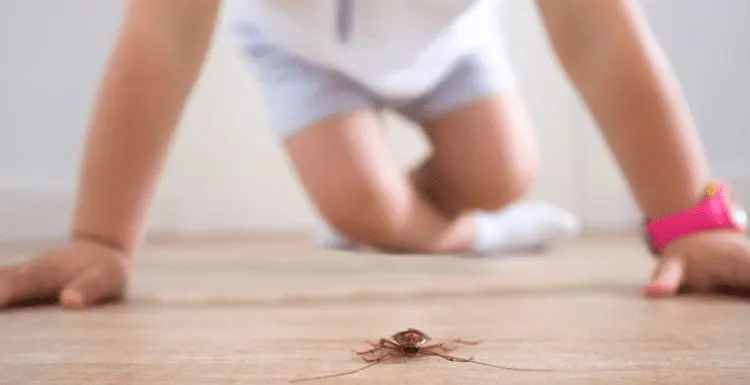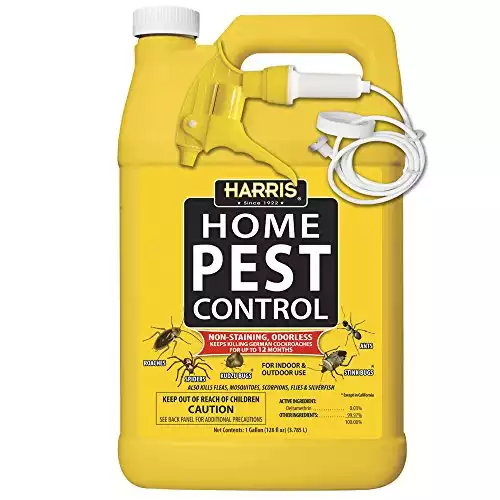It may be difficult to think about a list of the most common house bugs, but there are a surprising number of them hiding out in your carpets, walls, and beds.
Read on to learn about the most common types.
17 Common House Bugs
Spiders, cockroaches, termites, and beetles are some of the most common bugs seen in a vast majority of homes. But many others swarm near our homes and can get inside if we’re not lucky or prepared.
Let’s look at the most common types of house bugs, what each one looks like, where they live, and how to prevent any of these insects from invading your home.
Spiders
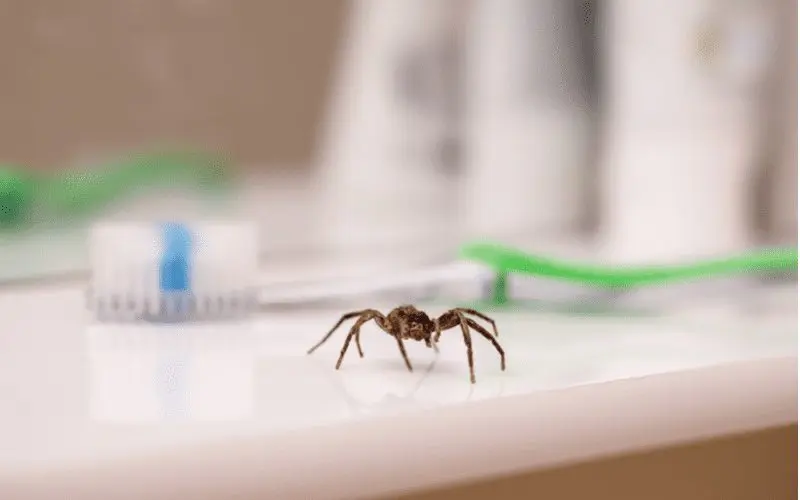
Rhjphotoandilustration/Shutterstock
Let’s be honest: Other than on Halloween, is there really a time when we like to see spiders hanging on the walls of our homes?
Yet, spiders live in our houses throughout the year. They are particularly energetic during mating season, and they come out of the woodwork in search of a mate. To keep spiders at bay, quickly remove webs when they are seen.
Plus, turn off the porch light at night. Lights attract insects, and insects attract spiders searching for food.
Powderpost Beetles
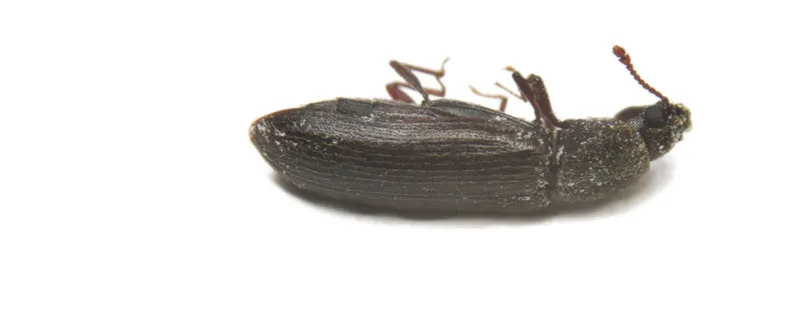
Dean Fikar/Shutterstock
Powderpost beetles are destructive little guys that often show up in new homes throughout the southern U.S.
They feast on hardwood only, so look for small holes and the presence of fine sawdust in molding, flooring, cabinets, and doors.
Removing the infested wood usually provides the most economical solution.
Termites
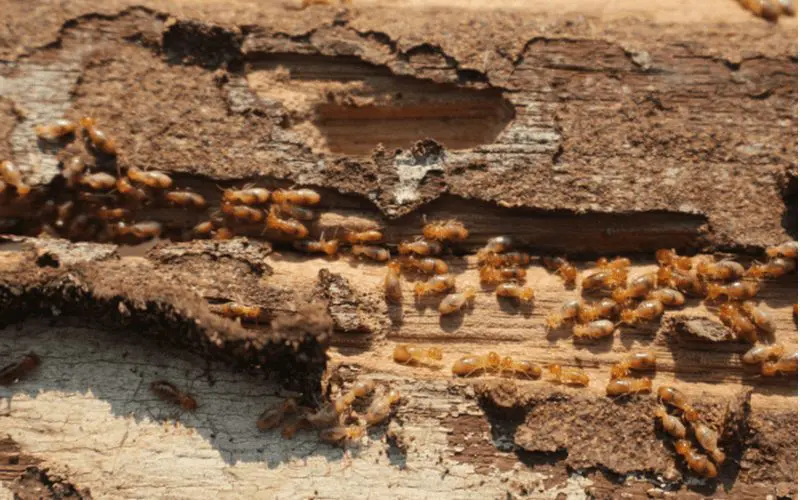
Plew Koonyosying/Shutterstock
Wood-destroying termites cause billions of dollars in damage to property throughout the U.S. each year.
Because of their prevalence, homeowner’s insurance policies often exclude termite damage from coverage.
There are effective termite controls these days, but it’s always wise to call in an expert before the damage is too severe.
Carpenter Ants
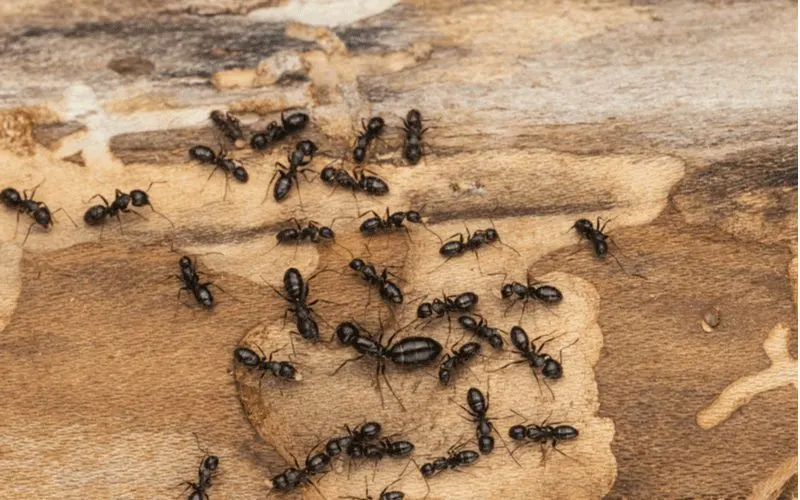
Meister Photos/Shutterstock
Carpenter ants cause significant structural problems in some parts of the country, notably the Pacific Northwest.
Carpenter ants don’t eat wood; they bore holes into wood and make their nests there.
Otherwise, carpenter ants find open areas inside hollow doors, behind insulation, and inside styrofoam panels.
These bugs can be a challenging problem once they decide to come inside and seek out shelter.
Honey Bees
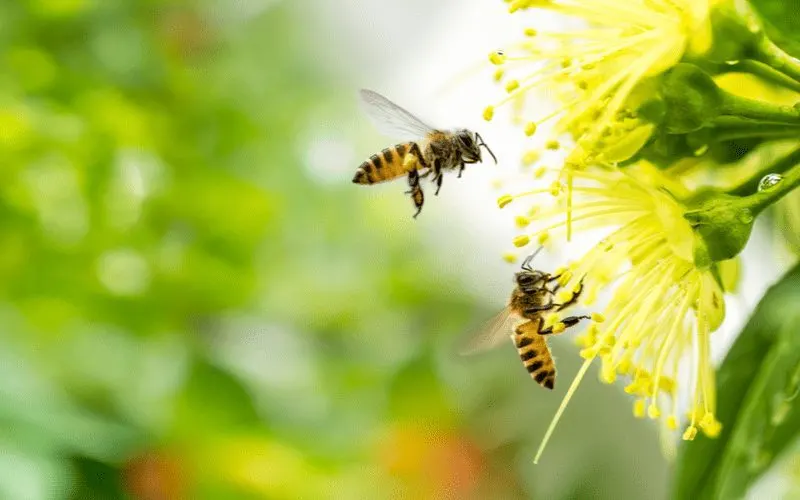
Ruksatakarn studio/Shutterstock
Honey bees sure have an essential role in the ecosystem when they are outdoors. But they become an expensive homewrecker once inside.
A colony of 30,000 bees can build a large hive filled with wax, honey, and propolis within just a few days.
If you try to kill the hive with an insecticide, it’ll leak wax, honey, and the dead bees inside. The decaying hive will also become attractive to other pests, such as moths and rodents.
That’s why the most important part of bee removal is getting rid of the hive. And don’t worry. Wild honey bees aren’t endangered, so there is no need to feel guilty about exterminating a hive and all the bees in it inside your home.
German Cockroaches
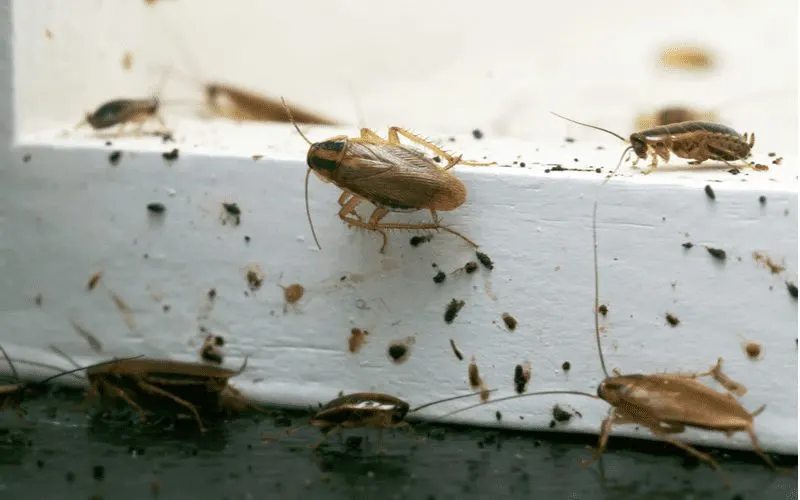
IrinaK/Shutterstock
An infestation of German cockroaches in the home can be especially unhealthy for children.
Research has shown that youngsters who grow up in homes with German cockroaches are more likely to suffer from allergies and asthma than those who don’t.
That is because their feces and molten skin contain allergenic pathogens. A German cockroach infestation often requires an extensive cleanup, so it’s always better to fix this problem the moment you notice it.
Camel Crickets
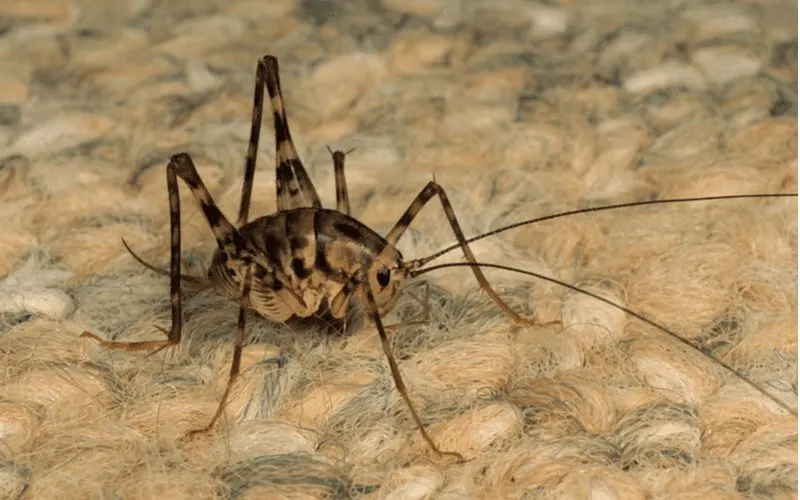
Gerry Bishop/Shutterstock
Crickets chirping on a summer’s night are one of nature’s most enjoyable natural sounds. But crickets quickly lose their appeal once they find their way inside. They disturb sleep, eat clothing, and breed rapidly.
Like other critters, camel crickets seek dark and moist spaces to multiply, and they can quickly take over basements and ground floors. The best defense here is a good offense.
Remember to seal all entry doors and prevent crickets from easily hopping inside. Otherwise, set nontoxic traps to catch crickets that have made their unwelcome way in.
Silverfish
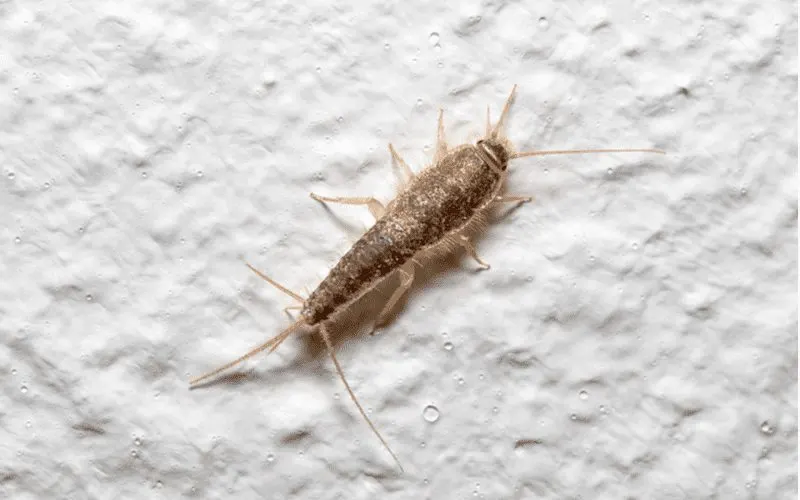
Macronatura.es/Shutterstock
Ever notice tiny holes in your sweaters or other clothing?
You might think at first that moths are the problem. Actually, you may have silverfish. These wingless creatures feast on the sugars found in natural fibers such as silk, wood, and cotton.
Moisture also attracts silverfish. That’s why you’ll often spot them in tubs and sinks. Appropriate insecticides make treating silverfish easy. You can also pretreat their potential hangouts in moist locales throughout your home.
Fruit Flies
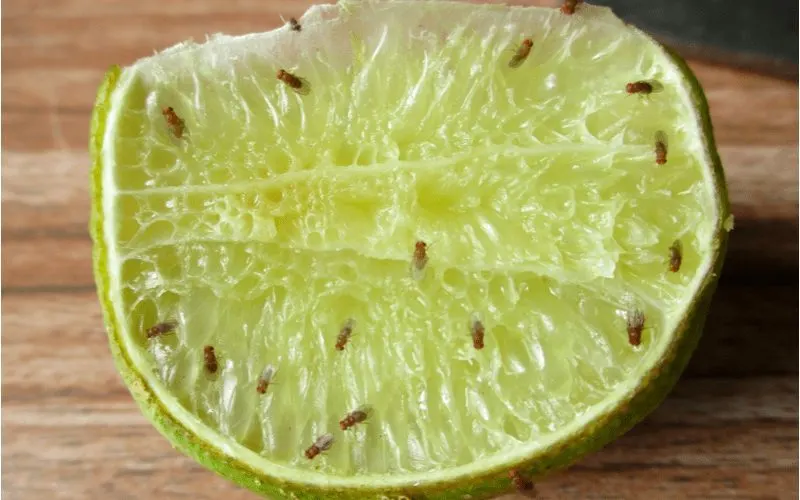
Supapornkh/Shutterstock
Fruit flies are pesky. They flit around your head while you cook, gather in groups on your kitchen counter, and take up residence in your fruit basket.
You can certainly try to shoo them away, but they are likely to come right back.
Better yet, try placing small muslin sacks filled with basil, peppermint, eucalyptus, lemongrass, lavender, and clove around the house. Fruit flies can’t stand the smell.
Centipedes
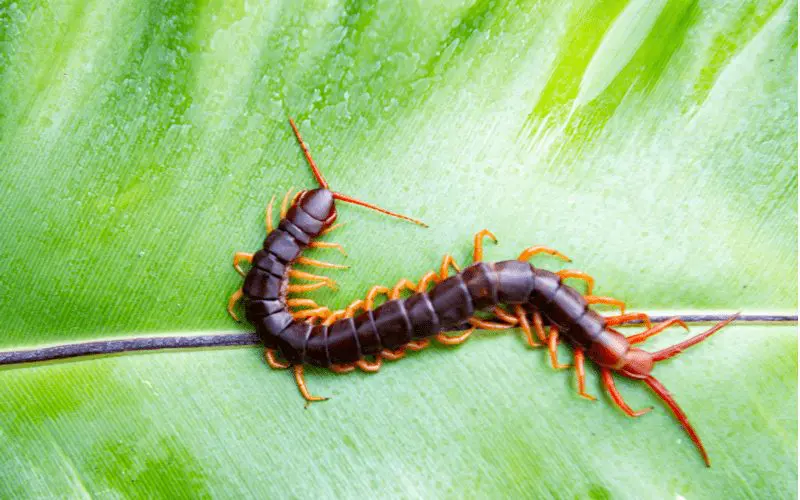
Centipedes are high on many people’s list of unwanted critters in the home, mainly because they just look creepy.
However, you may be surprised to learn that these insects, which have 30 legs and not 100, aren’t necessarily harmful to your home.
They are one of nature’s smallest predators and can actually protect you from other insects and spiders that like to head indoors in search of food, water, and damp places to live.
Millipedes
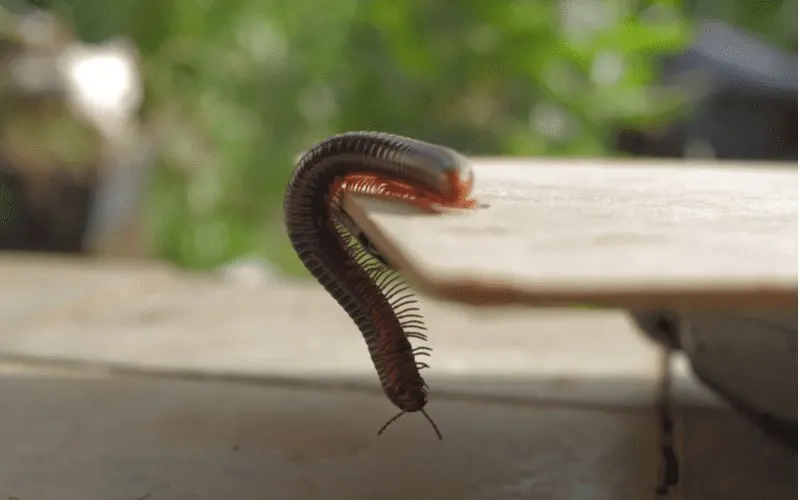
Yulio Akhmadi/Shutterstock
Millipedes are usually the friendlier, more-docile relative of centipedes.
But millipedes (60 legs, not 1,000) can hurt humans when they feel threatened; some even release poisonous hydrogen cyanide if someone holds them.
It’s not enough poison to kill a human, but one should certainly wash their hands thoroughly after contact. One should also avoid touching the face or eating food immediately after an attack.
Mosquitos
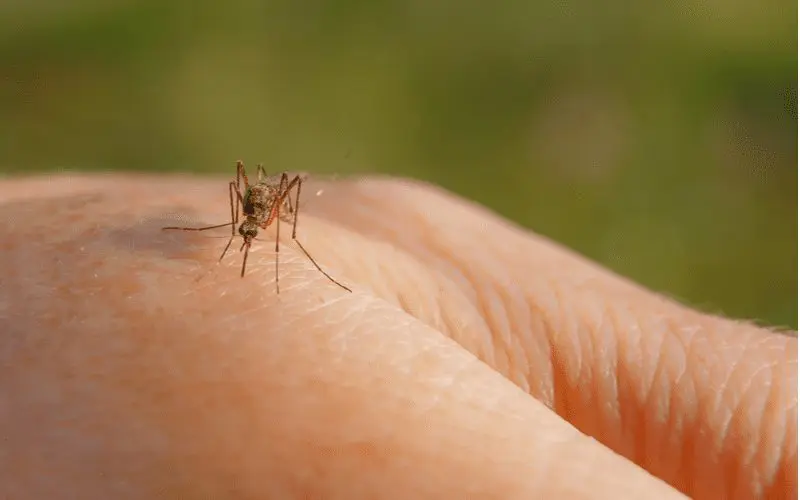
Sauko Andrei/Shutterstock
Mosquito-borne illnesses kill more people than every other cause on earth. In the U.S., mosquitoes spread diseases that affect the brain in humans and the heart in pets.
If mosquitoes enter your home, use a pest fogger or spray to kill them.
Bed Bugs
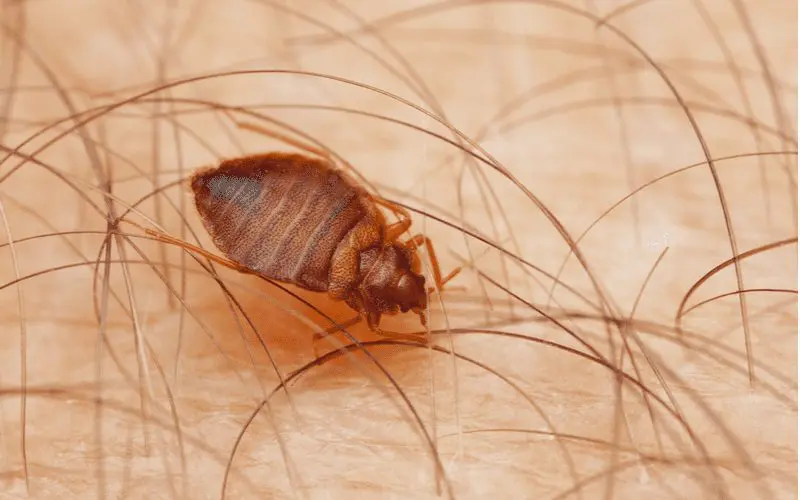
Bed bugs have seen a resurgence due to international travel and the severe reduction of most types of pesticides.
Bed bugs don’t carry disease, but they certainly reduce the attractiveness and livability of any home because they soil bedding and furniture.
They are also very nasty to eradicate. Most pesticides don’t work on them. The best home remedy is to bag up your sheets and pillowcases and wash them with hot water. Meanwhile, vacuum up the pests wherever they are found.
Stinkbugs
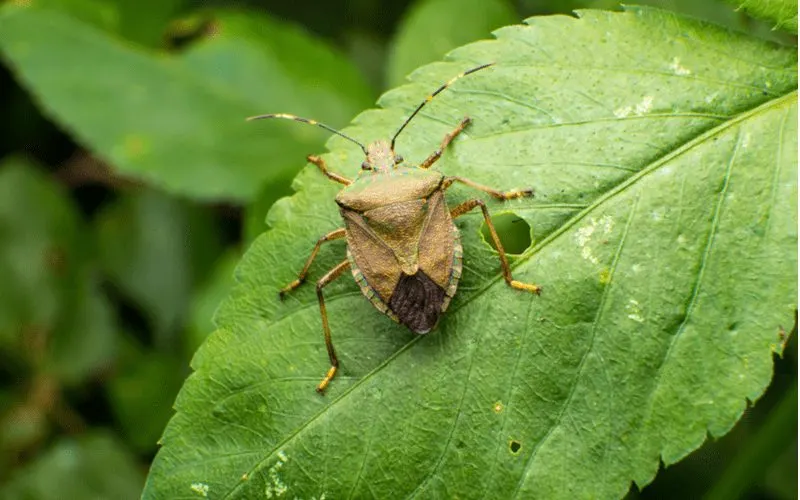
Ricky Kuo/Shutterstock
This critter earns its moniker due to the smelly chemical excretion it produces when threatened.
Homeowners throughout the Northeast and Mid-Atlantic regions of the U.S. are most familiar with these pests. They become active in the autumn and leave their outdoor nests to look for shelter from the cold.
Seal each entry point to your home to keep them from creating a new nest inside your house. You can also rub a strongly scented dryer sheet on screens and curtains since stink bugs tend to cling to those surfaces. Apparently, they don’t like the smell.
It’s ironic, isn’t it?
Ladybugs
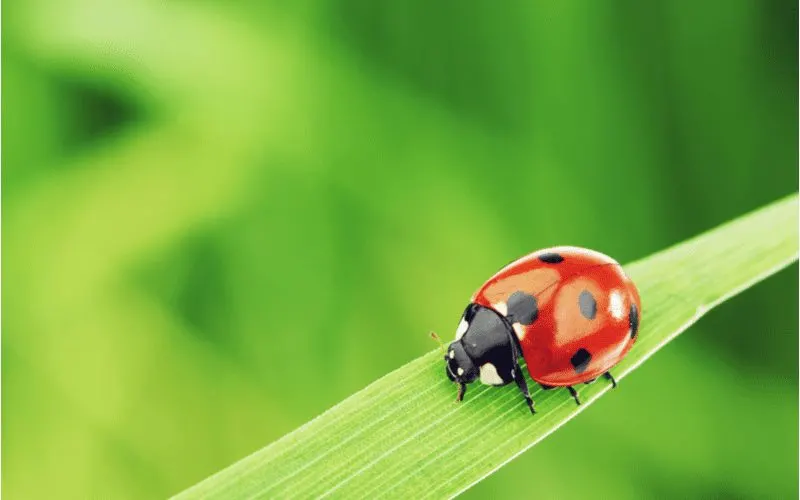
Yellowj/Shutterstock
Ladybugs may have the most benign reputation of all insects. Heck, they are even a symbol of good luck!
Still, several ladybug species like to seek refuge in our homes over the fall and winter, sometimes in large numbers. Look for them in the higher-up places where they prefer to nest: attics, porches, and garages.
But they will also gather inside walls, window frames, and door frames. If you spot a ladybug or two in your house, sweep them up and release them.
Remember, you want as much good juju as you can muster. Plus, crushed ladybugs actually give off a rancid smell.
Fire Ants
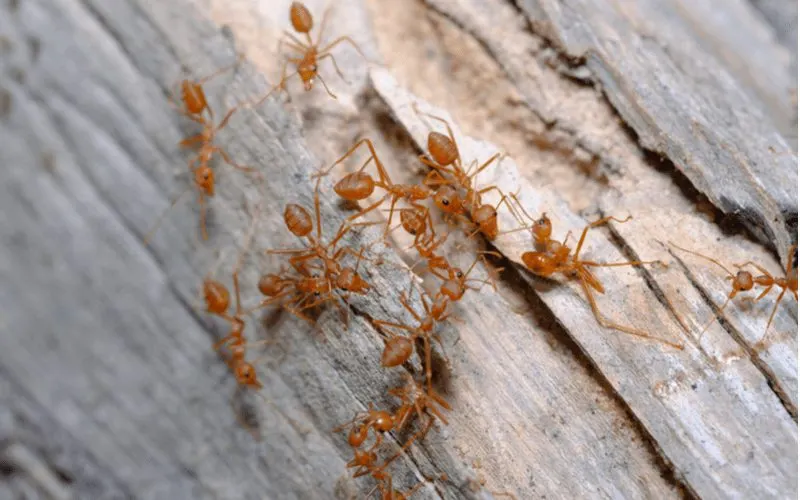
Hand Robot/Shutterstock
In the southern U.S., fire ants can cause significant damage to transformer boxes, air conditioners, and electrical switches.
This, in turn, can cause a power outage at your home. Fortunately, fire ants are not difficult to control.
They have a taste for bait and often take it inside their mounds and distribute it to the queens and brother insects.
If the problem persists, treat above-ground mounds with insecticide dust or liquid.
Common Housefly
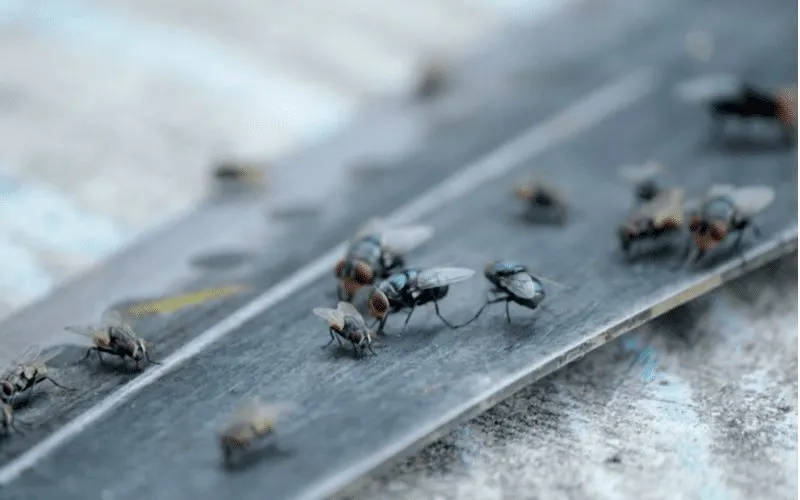
Mr.Samarn Plubkilang/Shutterstock
The common housefly is widely considered the greatest threat to the human welfare of any non-biting insect. That is because the housefly is basically everywhere, mates rapidly, and has the ability to transmit disease to people.
Houseflies carry approximately 1 million bacteria on their bodies and can transfer these to contaminate surfaces and food.
The housefly can transmit disease-causing agents through their body hairs or when they vomit onto food on which they’ve landed. In doing so, they liquefy the material for digestion.
Frequently Asked Questions
What do bugs typically eat?
Like each of us, insects have their favorite foods. For example, ladybugs like aphids and spiders enjoy whatever insect finds its way into their webs.
Others eat meat, nectar, or pollen. Each bug is a little different in this regard.
Why do bugs tend to like light?
The main reason bugs seem to gravitate toward light is that light helps them see when they are flying. They rely on moonlight and ambient lights, such as those on your porch, to guide their way.
Not all bugs like light, though. Cockroaches hide in dark spaces and will scatter the moment you turn on a light.
Do bugs go south for the winter?
Some actually do. Butterflies tend to migrate to warmer climates when the temperatures drop.
But some bugs head indoors, to windows, floors, doors, and carpets. And others, like bees, find a place to huddle together and use each other’s body heat to keep warm.
How Do You Get Rid of House Bugs?

Hedgehod94/Shutterstock
The list above contains just some of the critters that may be bugging you out in your home.
There are, however, safe and sane ways to get rid of most of these common house bugs.
But for your peace of mind, the best bet is to prevent them from entering your house in the first place.

